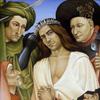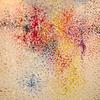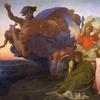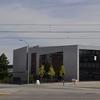Norton Organizes First Exhibition of Art by Gertrude Vanderbilt Whitney Since the Artist’s Death in 1942
- WEST PALM BEACH, Florida
- /
- August 17, 2017
Gertrude Vanderbilt Whitney: Sculpture Will Showcase Rarely Seen Works;
On View January 25 – April 29, 2018
The Norton Museum of Art will present the first exhibition in more than 75 years of the sculpture of Gertrude Vanderbilt Whitney (1875-1942), artist, philanthropist, and founder of the Whitney Museum of American Art. Although Whitney’s sculpture is little known today, she had a significant career as an artist, receiving major commissions and exhibiting throughout the United States and Europe. Gertrude Vanderbilt Whitney: Sculpture is organized by Dr. Ellen E. Roberts, the Norton’s Harold and Anne Berkley Smith Curator of American Art, and will run January 25 through April 29, 2018. It will include approximately 45 sculptures and drawings, many of which are rarely seen works from private collections.
This exhibition will showcase the remarkable variety of Whitney’s work – from her earliest classical sculptures to her more symbolic public monuments, from her bleakly Realist depictions of the tragedy of World War I to her late Art Deco work.
Exhibition curator Ellen Roberts explains that, “Whitney’s sculpting fed her desire to help other American artists, but her art is important not only for the impetus it gave her philanthropy, but also for the works themselves.” Whitney created striking and popular public art in her lifetime, and her incisive depictions of her family, friends, and scenes from World War I are still captivating today.
The installation will move chronologically through Whitney’s career, and will include photographs of Whitney’s monuments in the United States, France, and Spain; her nurse’s uniform from World War I; and depictions of the artist and her sculpture by contemporaries such as painters Robert Henri and Guy Pène du Bois, sculptor Jo Davidson, and graphic artist L. Gauthier. Seen alongside her art, these materials will help to illustrate Whitney’s artistic ambitions and her achievement of them.
Heir to the massive fortune made by her family in shipping and railroads, Gertrude Vanderbilt was one of the wealthiest women of her age. Yet almost immediately after her marriage to Harry Payne Whitney in 1896, she realized that the life of a society hostess and mother would not satisfy her. “She turned to sculpture for professional and emotional fulfillment and a way to define herself apart from her money,” said Roberts.
Whitney rose to prominence as a public sculptor in the 1910s, when she created such monuments as the Titanic Memorial in Washington, D.C. The show will include preparatory sketches and a model of this popular work. While she used idealized forms in such monuments to make them more universally relevant, she also employed a starker Realism to create perceptive portraits of her family, friends, and acquaintances. She depicted members of the working class – including African Americans and the unemployed – in a more nuanced way than was typical, creating sculptures that are comparable to the Realist paintings she favored by artists such as Robert Henri, George Bellows, and Edward Hopper.
Whitney served as a nurse in France during World War I and later created a series of poignant sculptural sketches of the figures she had seen on the front. These became the basis for a number of war memorial designs such as her panels for Thomas Hastings’s 1918 Victory Arch in Madison Square and her Washington Heights and Inwood Memorial (1921–1922), both in New York. Unlike most of her contemporaries, Whitney depicted the grim reality of war in these monuments rather than its glorified ideal. The exhibition will include casts of these works, as well as her A.E.F. Memorial commemorating the location in Saint-Nazaire, France, where American troops landed in 1917, and Monument to the Discovery Faith memorializing the site in Huelva, Spain, where Christopher Columbus set sail to discover the New World. These latter two works made her international reputation in the 1920s. Monument to the Discovery Faith demonstrates Whitney’s experimentation later in her career with the streamlined, stylized mode of contemporary Art Deco.
Whitney’s wealth allowed her to have her designs in clay made into more permanent bronze and stone versions, and her many connections brought her commissions. Yet her social position also meant that many of her contemporaries assumed she was merely a dilettante. She was further hampered by her gender, since work by women artists in this period was not appreciated for its true complexity and strength.
“Despite these challenges, Whitney succeeded in redefining herself so that she was identified first as a sculptor,” Roberts said. “Since her death, however, her role as an art patron has superseded her work as an artist, and her wealth has continued to suggest that she could not have been serious about her art. In the high modernist view of art as progressing toward abstraction, there is little room for Whitney’s sculpture, which remained grounded in the visible world. Yet a century after she worked, the compelling nature of her art and her contemporaries’ admiration for it make it time for a reassessment.”
Gertrude Vanderbilt Whitney: Sculpture will be accompanied by a 120-page, fully illustrated catalogue with text by Roberts and a chronology by Norton Museum Associate Curator of Education for Public Programs Erica Ando.
For additional information, please call (561) 832-5196, or visit www.norton.org.













100x100_c.jpg)
